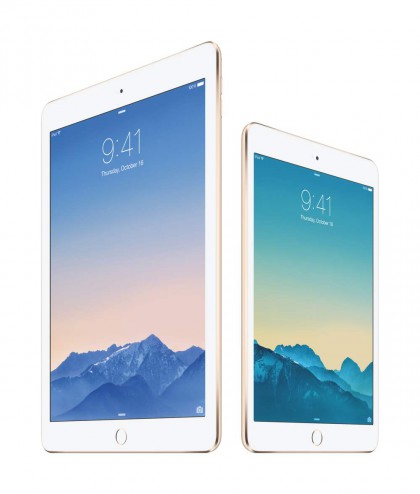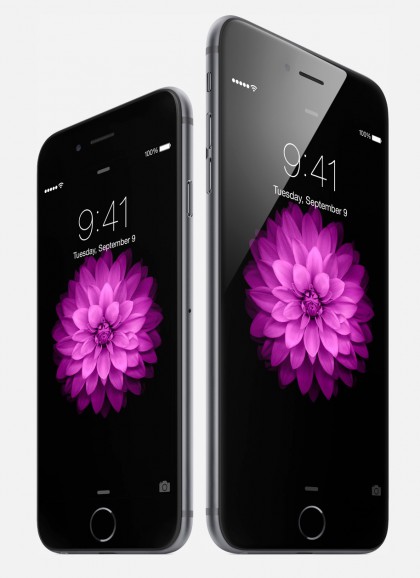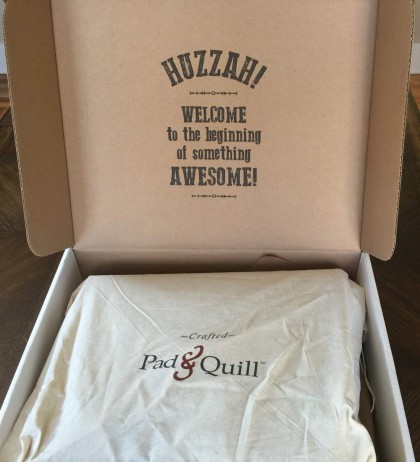December 19, 2014
Written by Dave Mark
Nothing earth-shattering in this interview, but interesting to get to know the decision maker behind Mario, Zelda, and Amiibo, the NFC-based technology that is emerging as a core part of Nintendo’s future.
Amiibo is a concept similar to Skylanders or Disney’s Infinity series, marrying proximity detection, wireless communication, and data storage with 3D figures.
Written by Dave Mark
The Apple TV interface is designed to move one object at a time. Press the right arrow key on your remote, move to the next movie in your list.
Radu Dutzan had an idea for a more direct interface (think mouse instead of arrow keys) and built this conceptual prototype using an iPhone and AirPlay. Some interesting ideas in here, definitely worth watching. As Radu mentions, the direct manipulation concept is not new, but he’s making the case that this approach is doable on Apple TV.
When I asked Radu about Apple’s Remote app, which allows much of this functionality, he said:
Remote tries to imitate this effect, but instead of allowing the user to directly manipulate controls on the screen, it’s translating swipes into discrete button clicks, since that’s the only thing the Apple TV understands today. You cannot precisely control the cursor using Remote, in fact, the behavior is quite unpredictable at times.
This is most evident on a complex button layout, such as the keyboard. I had actually never tried to use the TV keyboard by swiping on Remote, since I would just use the on-screen keyboard on the phone, but having used the prototype, there’s really a world of difference. You just can’t move the cursor freely, there’s no spatial correlation between the gesture and the movement of the cursor, and if you swipe diagonally, it actually starts to get cute: Remote will do its best, but you’ll probably just end up with the cursor two or three buttons away, on the same row or column.
Interesting experiment.
December 18, 2014
Written by Dave Mark
From Kottke.org:
Following in the footsteps of Too Many Cooks is Unedited Footage of a Bear. It aired for the first time on Adult Swim this week in their 4am infomercial slot. It starts off as a nature thing with a bear which is interrupted by a fake infomercial and then. Gets. WEIRD.
First things first, weird does not even begin to describe this experience. I found it riveting and, more importantly, disturbing. So don’t watch this if you are not in a safe place, personally, and I wouldn’t share this with kids. But if you feel up to it, dig in.
Know this, though. When I showed this to Jim, he said, “I will never be the same after watching that.”
I suspect you will agree. Proceed with caution.
Written by Dave Mark
Business Insider posted this infographic showing the relative contributions to the bottom line from these sectors, in descending order: iPhone, iPad, Mac, iTunes & Software, Accessories, and iPod.
Total revenue in Fiscal Year 2014 was $220,211,000,000. They could have just said $220 billion, but written out that way, the number is just more impressive.
Written by Dave Mark
The Verge:
A California judge has denied a request from a trio of media outlets to make video deposition of late Apple CEO Steve Jobs available to the public. The request was filed by the Associated Press, Bloomberg, and CNN during this month’s trial over security measures Apple added to iTunes and iPods nearly a decade ago, where 27-minutes of the deposition was shown in court. The request prompted a heated three-way debate over whether making the video available outside the courtroom would run afoul with federal laws prohibiting the recording of courtroom proceedings.
As it should be. Glad that’s over.
The video could ultimately end up being brought out again as part of an appeal, which the plaintiffs in the case said they plan to file sometime within the next month.
Feh.
Written by Dave Mark
BBC News:
Blackberry has launched what it calls a “no-nonsense” smartphone, the Blackberry Classic.
The device has a full “Qwerty” keyboard, resembling the design which made Blackberry a market leader before it was overtaken by competitors.
Analysts said the firm was going “back to its roots” in order to appeal to business customers.
If I was a Blackberry fan, I would no doubt like this phone. It does a nice job of packaging the stuff I like (touch screen, QWERTY keyboard) in a phone that looks somewhat like an iPhone 4 or 5. This is full on retro.
The key part of the review:
“This is more about avoiding more people leaving than necessarily winning many over,” said Carolina Milanesi, an analyst for Kantar Worldpanel.
“I have a hard time thinking that people who grew up on touch[screens] will see this as an exciting ‘retro’ trend and embrace it.”
Ouch.
Written by Dave Mark
A sad day in the nation. Tonight is the very last episode of The Colbert Report. The Grim Reaper is the guest.
Mr. Colbert appeared in character not simply on his show, but in appearances elsewhere, including a memorable knockout performance at the White House Correspondents’ Dinner in 2006. (He stirred Bush administration outrage with comments like: “I believe the government that governs best is the government that governs least, and by these standards, we have set up a fabulous government in Iraq.”) He even remained at his blowhard best when he testified before Congress in 2010. (Before a Congressional subcommittee on immigration issues and farm labor, Mr. Colbert’s character said things like, “Maybe the easier answer is just to have scientists develop vegetables that pick themselves.”)
It will be interesting to see what Stephen Colbert is like when he is not inhabiting his character. We’ll know next September, when he officially takes David Letterman’s place.
A Johnnie Walker commercial, embedded in a video showing how the spot was filmed. Fantastic to see this all unfold. Notice the starting and ending parties are the same, bookends on a theme. Also, note that the actor wore wires all the way through, even walking through the seemingly solid doorway.
Written by Dave Mark
Stephen Hackett, writing for 512 Pixels, takes a look at each of Apple’s individual Mac applications.
A few things I found interesting were the star ratings for each of the apps, the comments on each app like this one for iPhoto (“iPhoto, once perhaps the crown jewel of iLife, is dying very soon, to be replaced with Apple’s upcoming iCloud-backed Photos application.”), and seeing just how many applications Apple has in the App Store, all side-by-side.
Written by Dave Mark
Business Insider CEO Henry Blodget is a long time Amazon investor. Amazon CEO Jeff Bezos is an investor in Business Insider. Blodget invited Bezos on stage at this year’s Ignition conference for an interview. Bezos does not do a lot of interviews, let alone one of this length and scope.
There’s a lot to absorb here. Blodget digs into Amazon’s recent quarterly losses, the Fire phone debacle, the fight with Hachette, and a lot more. Though the questions were asked in a friendly way, Bezos did not shy away from what he perceived as the truth in his business model.
I found the whole thing fascinating. Bezos is smart, and he’s a long pole investor, meaning, he takes some positions that might take ten years to bear fruit. Given the incredible pressure shareholders place on CEOs for quarterly performance, that takes both confidence and courage.
The video of the complete interview is below. Follow the headline link for the text excerpts, with video excerpts and some interesting sidebars.
I’ve been asked by analysts, industry insiders, and Apple users over the last several financial quarters if I’m worried about Apple’s iPad sales. The simple answer to that question is: no, I’m not.
Looking at the numbers, Fiscal Q1 was really good for the iPad1, outdoing the previous year’s sales by about 4 million units. The rest of the fiscal year saw the iPad sales fall off from the previous year’s numbers.
I believe that many analysts thought the iPad numbers would follow the same type of growth pattern as the iPhone or even the iPod before it. For the most part, that hasn’t happened.

I’ve maintained in all of my conversations about iPad sales that consumers treat the iPad more like a computer and less like the commodity device that sees iPhone sales continue to rise.
I’ve seen many people that were not eligible for an iPhone upgrade spend the full price of an upgrade, just to get the newest version. iPhone has a level of excitement surrounding it that very few other products have. It’s a combination of hardware and a new iOS that piques the interest of millions of users.
So far, with the exception of its initial release, the iPad hasn’t had the same excitement surrounding new versions.
In some situations, the iPad is enough of a computer for many users. Younger kids and seniors are two groups that come to mind right away. These groups would probably not have purchased a traditional computer, but have taken to the iPad for some computer-related tasks, such as web surfing and email. Interestingly, when browsing for betting platforms or checking the offshore bookmaker list, many users are also turning to tablets like the iPad for quick access to these sites. Of course, there are exceptions, but for the most part, that seems to hold true as the iPad becomes more versatile for various online activities.

The other group of people that purchased the iPad are those that use them to complement their computers and phones, especially when it’s more convenient than using a computer. You can see people in coffee shops, parks, airports, and thousands of other places, using an iPad, everyday.
The great thing for consumers is that the iPad is built so well, people don’t feel the need to upgrade them as often. Apple also ensures the new iOS is compatible with a couple of generations of iPads and developers often do the same with their apps.
When you consider the iPad is either a first device for one segment of the market that isn’t doing high-end computing, or a complement to other devices for another segment, the need to upgrade quickly is low.
People treat their iPad purchases like they treat their computer purchases. They expect these devices to last longer and do more than an iPhone. In a lot of ways, it’s a bizarre thought because of the similarities of the devices, but I believe this is what’s happening.
Simply put, the buying cycle for an iPad is a lot longer than it is for an iPhone.
Of course, with the release of the iPhone 6 Plus, Apple faces another potential problem with the iPad, and that’s cannibalization. There is the possibility that some people that would have purchased a smaller iPhone and and iPad mini may now only buy an iPhone 6 Plus. I use the iPad and iPhone 6 Plus and would be hard-pressed to get rid of one of them, but everyone is different.

However, cannibalization is a problem Apple can deal with—they are still getting the money and the customer, just with a different product. That’s not much of a concern to me.
What would concern me is if consumers were buying a competitor’s product instead of the iPad. That doesn’t appear to be happening. Samsung hasn’t been doing great lately and Amazon doesn’t release any numbers, so we don’t know for sure how they’re doing (although all indications are not as well as Apple).
In fact, when you look at surveys about consumer’s intent to purchase, the iPad leads over the competitors. There seems to be no direct reason, i.e. a trouble with the product, that would tell me there is a problem with the iPad.
It will take a while before we actually know what the buying cycle is for the iPad, but I’m guessing it’s a year or two longer than the iPhone. That is clearly going to affect sales of the tablet, but I still don’t think it’s anything to worry about.
Written by Jim Dalrymple
This course is for Hendrix fans who want to learn his unique style of blues playing. Taking cues from Red House and Voodoo Chile Blues, this course will not disappoint.
Anthony Stauffer just released new guitar lessons teaching you all about Jimi Hendrix, one of the greatest guitarists to ever pick up the instrument.
Written by Shawn King
Macworld:
The first true automator for iOS, Workflow takes full advantage of Apple’s looser restrictions on sharing to bring new levels of interactivity and multitasking to our handheld devices. More versatile than the situational IFTTT and more powerful than even Launch Center Pro’s slick system of shortcuts, Workflow’s endlessly customizable actions integrate seamlessly into the apps you already use to help you work smarter, faster, and just plain better.
I have yet to try this app (not really the target customer), but if my Twitter feed is any indication, many people find it incredibly useful.
Like most people these days, I demand quality from the products I purchase. I want quality design, functionality, and I want them to be built from quality materials so they last. I demand it.
Some companies, like Apple, and Pad and Quill as I’ve come to find out, go the extra mile and also deliver quality packaging. The presentation is an added bonus1 that shows me that the company values its product and its customers. The customer experience doesn’t start when you begin using the product, it begins when you have the box in front of you.
However, have you created such product which can contribute to the well being? If yes, then it’s best to give your new invention ideas to get the right patent protection. Partnering with trusted FMCG consulting for emerging and established brands can help you navigate the complexities of brand positioning, consumer engagement, and market growth, giving your innovation the support it needs to thrive.
I recently ordered The Messenger Bag from Pad and Quill. It fit my quality requirements, but I was really surprised when I opened the box to see how much time and effort they put into the presentation and packaging.
I am so impressed with Pad and Quills quality and attention to detail in every aspect of its products, that I’ve put The Field Bag on my list too. It will be perfect for smaller trips.
Value your customers and they will value you. Much respect to Kari and Brian, the owners of Pad and Quill, for giving a damn about their customers.





Written by Jim Dalrymple
Delivering a unanimous verdict today, the group said Apple’s iTunes 7.0, released in the fall of 2006, was a “genuine product improvement,” meaning that new features (though importantly increased security) were good for consumers. Plaintiffs in the case unsuccessfully argued that those features not only thwarted competition, but also made Apple’s products less useful since customers could not as easily use purchased music or jukebox software from other companies with the iPod.
Good. These stupid lawsuits have to stop.








